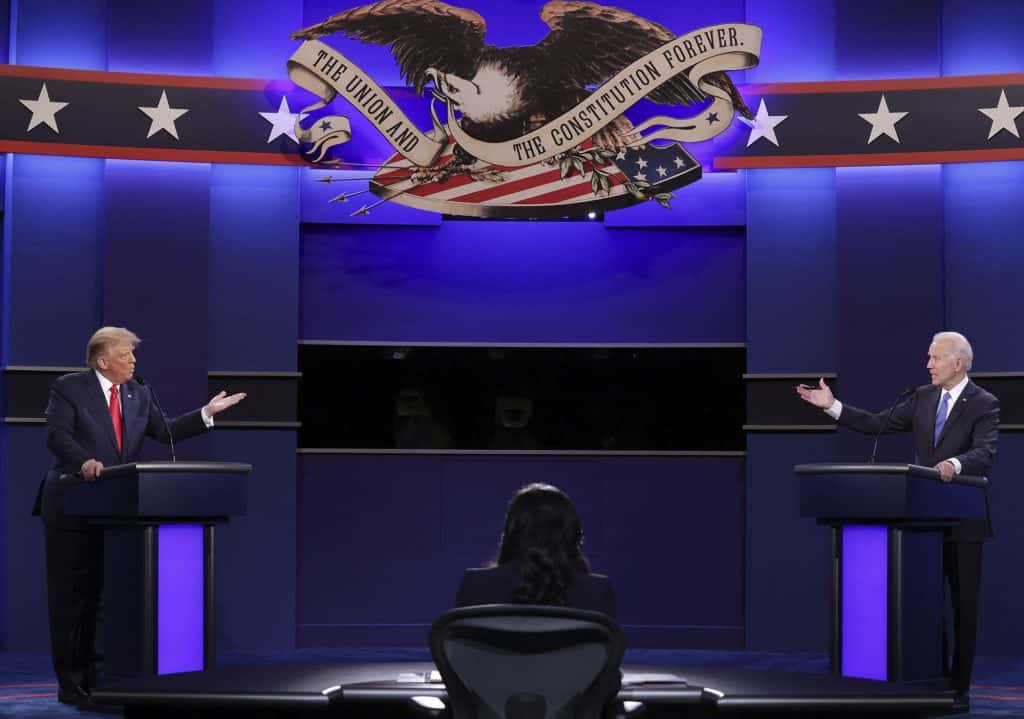Search ‘US Election 2020’ to see all our coverage
In the run-up to the US Presidential election – now under way – our student reporting team aims to explore, explain, enlighten and even entertain you on the race for the White House.
THE speculation in the run-up to today’s momentous American vote has always been that either Trump or Biden will win outright – however long the final result takes to become clear and whether or not lawyers are involved.
But there is another possible outcome ….
UoS Politics student Keith Bays examines what happens if the unlikeliest result of all emerges.

Photo: Chip Somodevilla / Pool via AP
IT’S unlikely that the 2020 US Presidential election will result in a tie, but it’s not impossible – and has happened previously in 1800, when Thomas Jefferson was elected president.
The US Presidential election uses an electoral collage system, comprised of 538 electors in total, so a 269-269 split always remains a possibility in every election cycle. If this outcome did happen, both houses of congress (the Senate and the lower House of Representatives) would need to intervene, and they would be required to conduct a ‘contingent election’.
The United States Constitution provides assistance
The US Constitution provides assistance in the event of a tie, via article 2 section 1, which was subsequently altered by the 12th amendment in 1804. If a tie takes place the House of Representatives has the authority to pick the President, and The Senate has the authority to select the Vice President.
The United States House of Representatives chooses the President
If the House of Representatives chooses the next President, then the process involves it allocating 1 vote to each individual state, and it is then up to state officials to decide how they wish to cast their vote, so all of the states have equal power to determine who the next president will be.
Additionally, the 12th Amendment stipulates that a candidate must receive a total of 26 state votes (a simple majority among the 50 states) to be declared President, and that this process must be completed no later than March 4. So if this happened, this process could potentially drag on for over four months.
The United States Senate chooses the Vice President
Processes are more straightforward for The Senate to select a Vice President: the senators simply need to take a vote and, as long as at least 51 or more of them vote for a candidate, then that candidate is elected. Moreover, the Senate (unlike the House of Representatives) can take as long as it wishes to make a decision, with the 12th Amendment placing no time constraints upon them.
If there is still deadlock
If a deadlock still exists to select the President, then the Vice President-elect would govern the country until the House of Representatives finally reaches a decision as to who it wishes to select as the President.
This, of course, requires the Senate to select a Vice President. However, if both houses of congress still remain deadlocked and a President and Vice President still cannot be selected, then the 1947 Presidential succession act would kick into gear – which would result in Nancy Pelosi, the Speaker of the House of Representatives, becoming the acting President of the US until a decision could be reached by both houses of congress.
All highly unlikely, but not impossible – especially in this year of the unexpected!



